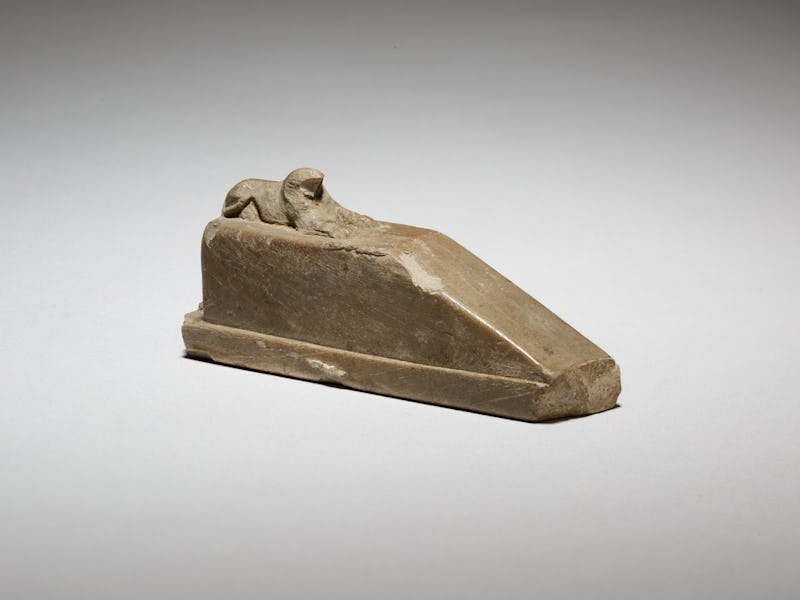Ancient Egyptians Changed Humanity’s Relationship With Time — and We Still Feel It Today
Humanity’s relationship with telling time began before the first written word, making it a challenge today to investigate the origin of many timekeeping units.

Humanity’s relationship with telling time began before the first written word, making it a challenge today to investigate the origin of many timekeeping units.
However, sometimes measurement units that derive from astronomical phenomena are quite easy to explain and likely were independently observed in many different cultures worldwide. For example, measuring how long a day or a year is used for apparent motions of the sun relative to Earth while measuring months comes from the phases of the moon.
Yet there are some measurements of time that do not have clear connections with any astronomical phenomena.
Two examples are the week and the hour. One of the most ancient written traditions, Egyptian hieroglyphic texts, gives us new insight into the origin of the hour. It originated in the area of North Africa and the Middle East and adopted in Europe before spreading around the world in the modern era.
Time in Ancient Egypt
The Pyramid Texts, written before 2400 BCE, are the earliest writings from Ancient Egypt. Included in the texts is the word wnwt (approximately pronounced “wenut”), and the meaning-hieroglyph associated with it was a star. From this, we gather that wnwt is associated with the night.
To understand the word wnwt and why it is now translated as “hour,” we go to the city of Asyut around 2000 BCE. There, the inside of wooden rectangular coffin lids are sometimes decorated with an astronomical table.
Sopdet and Sahu (Sirius and Orion) shown in the left and right-hand boats, respectively, from the East Osiris Chapel on the roof of the temple in Dendera.(Sarah Symons)
The table contains columns representing 10-day periods of the year; the Egyptian Civil Calendar had 12 months, each having three 10-day “weeks,” all followed by five days of festivals. In each column, 12 star names are listed, making 12 rows. The whole table represents the changes in the star sky over the course of a whole year, similar to a modern star chart.
Those 12 stars are the earliest systematic division of the night into 12 time areas, each governed by one star. However, the word wnwt never appears in association with these coffin star tables.
But around 1210 BCE in the New Kingdom — the period of ancient Egypt between the 16th and 11th centuries BCE — the link between the number of rows and the word wnwt is made explicit.
Astronomical instructions
One temple, the Osireion at Abydos, contains a wealth of astronomical information, including instructions on how to make a sundial and a text describing the motions of stars. It also contains a star table of the coffin type where, uniquely, the 12 rows are labeled with the word wnwt.
By the New Kingdom, there were 12 night-wnwt and also 12 day-wnwt, both clearly time measures. The idea of the hour is almost in its modern form but for two things.
First, although there are 12 day hours and 12 night-hours, they are always expressed separately but not together as a 24-hour day. Daytime was measured using shadows cast by the sun, while night hours were primarily measured by the stars. This could only be done while the sun and stars were visible, respectively, and there were two periods around sunrise and sunset that did not contain any hours.
Second, the New Kingdom wnwt and our modern hour differ in length. Sundials and water clocks demonstrate very clearly that the length of the wnwt varied throughout the year: long night hours around the winter solstice, and long day hours around the summer solstice.
To answer the question of where the number 12 or 24 comes from, we have to find out why 12 stars were chosen per 10-day period. Surely, this choice is the true origin of the hour. Was 12 just a convenient number? Perhaps, but the origin of the coffin star tables suggests another possibility.
Timekeeping stars
The ancient Egyptians chose to use the bright star Sirius as a model and selected other stars based on their behavioral similarity to Sirius. The key point seems to be that the timekeeping stars disappeared for 70 days each year, just like Sirius, even though the other stars were not as bright. The Osireion star text gives dates such that every 10 days, one Sirius-like star disappears, and one star reappears for the whole year.
Depending on the time of year, between 10 and 14 of these stars are visible each night. If recorded at 10-day intervals throughout the year, a table very much resembling the coffin star table emerges. By 2000 BCE, the table became more schematic than (in our sense) accurate, and a table with 12 rows had emerged, resulting in the coffin tables we can see in museums in Egypt and elsewhere.
It is, therefore, possible that the choice of 12 as the number of hours of the night — and eventually 24 as the total number of hours from noon to noon — may be related to a choice of a 10-day week.
And so our modern hour originates from a confluence of decisions that happened more than 4,000 years ago.
This article was originally published on The Conversation by Robert Cockcroft and Sarah Symons at McMaster University. Read the original article here.
This article was originally published on